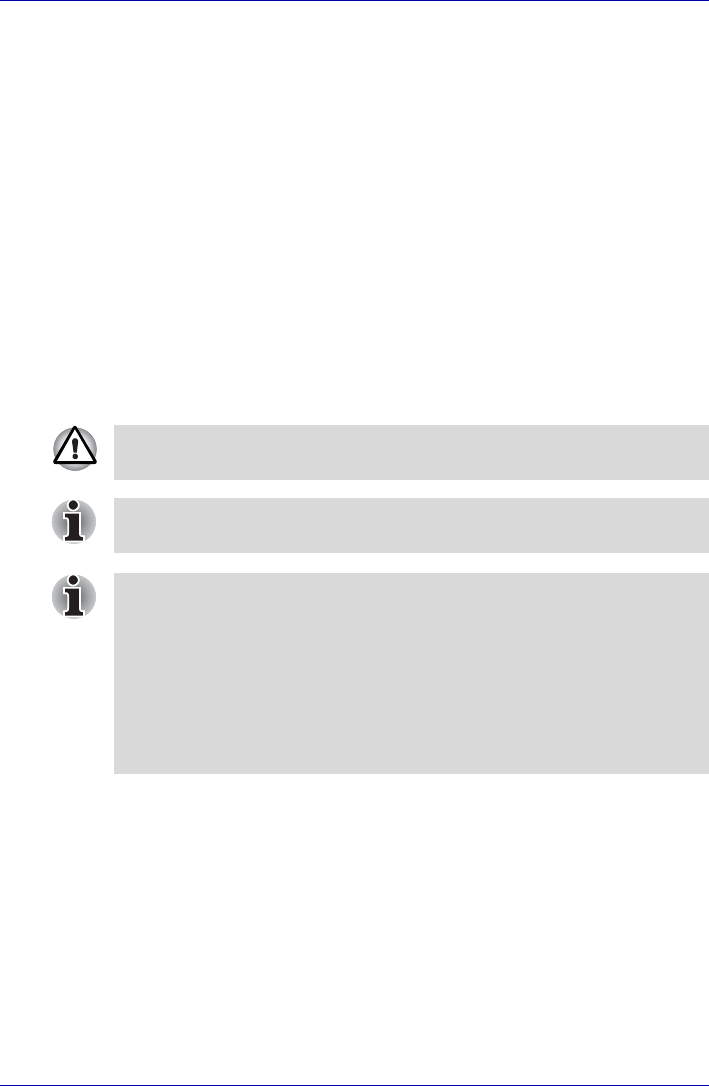
User’s Manual 4-33
Operating Basics
Wireless LAN
The Wireless LAN is compatible with other LAN systems based on Direct
Sequence Spread Spectrum /Orthogonal Frequency Division Multiplexing
radio technology that complies with IEEE802.11 Wireless LAN standard
(Revision A, B or G).
■ Theoretical maximum speed: 54Mbps (IEEE802.11a, 802.11g)
■ Theoretical maximum speed: 11Mbps (IEEE802.11b)
■ Frequency Channel Selection (Revision A: 5 GHz, Revision B/G: 2.4
GHz)
■ Roaming over multiple channels
■ Card Power Management
■ Wired Equivalent Privacy (WEP) data encryption, based on the 128 bit
encryption algorithm.
■ Wi-Fi Protected Access (WPA).
■ Advanced Encryption Standard (AES) data encryption.
■ Wake-up on Wireless LAN
Security
■ TOSHIBA strongly recommend that you enable WEP (encryption)
functionality, otherwise your computer will be open to illegal access by
an outsider using a wireless connection. If this occurs, the outsider may
illegally access your system, eavesdrop, or cause the loss or
destruction of stored data.
■ TOSHIBA is not liable for the loss of data due to eavesdropping or
illegal access through the wireless LAN and the damage thereof.
Do not install or remove an optional memory module while Wake-up on
Wireless LAN is enabled.
The Wake-up on Wireless LAN function consumes power even when the
system is off. Leave the AC adaptor connected while using this feature.
■ The values shown above are the theoretical maximums for Wireless
LAN standards. The actual values may differ.
■ The transmission speed over the wireless LAN, and the distance over
which the wireless LAN can reach, may vary depending on surrounding
electromagnetic environment, obstacles, access point design and
configuration, client design and software/hardware configurations. The
transmission rate described is the theoretical maximum speed as
specified under the appropriate standard - the actual transmission
speed will be lower than the theoretical maximum speed.


















